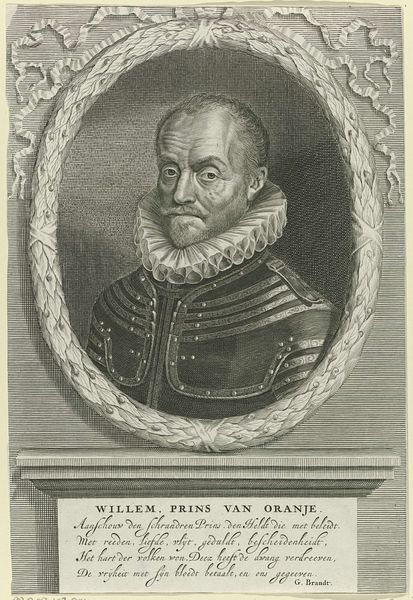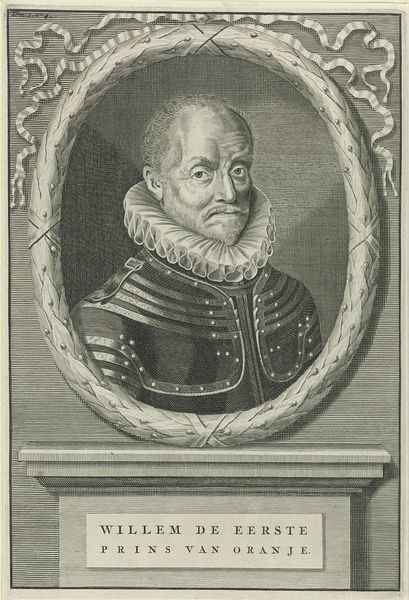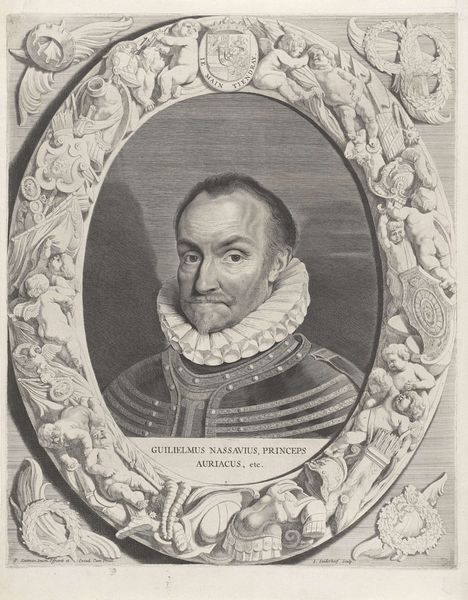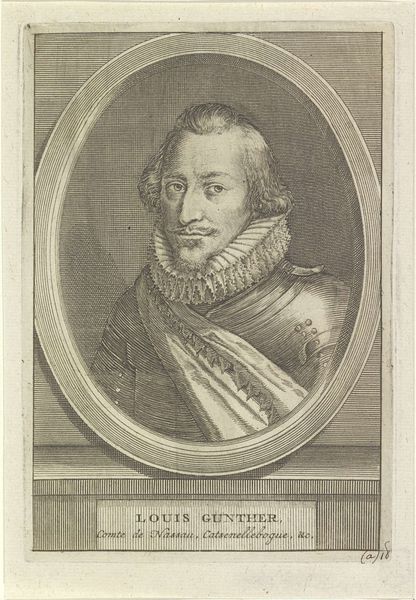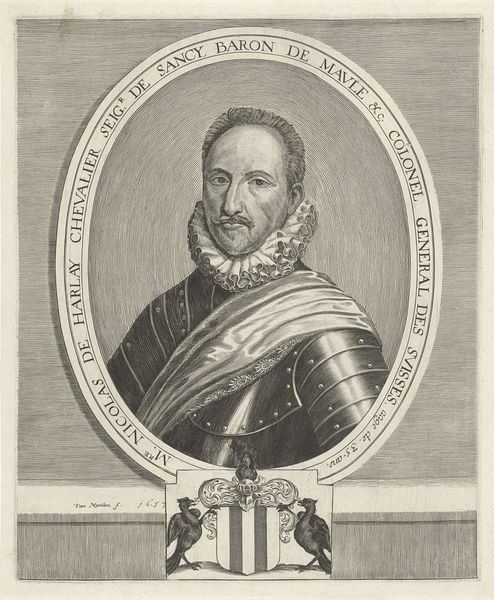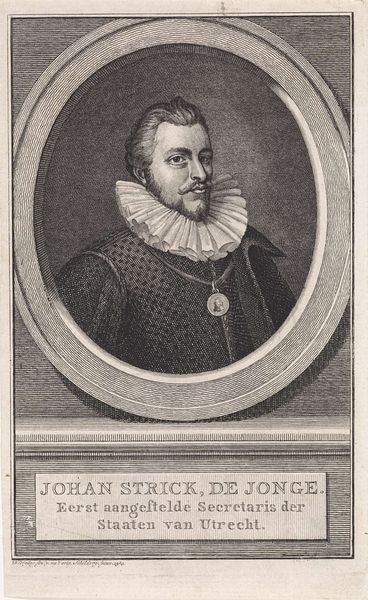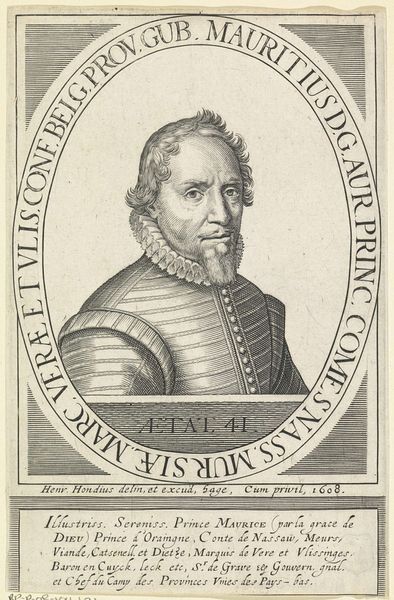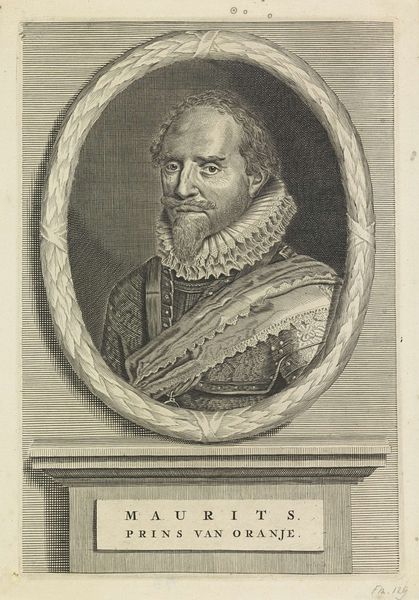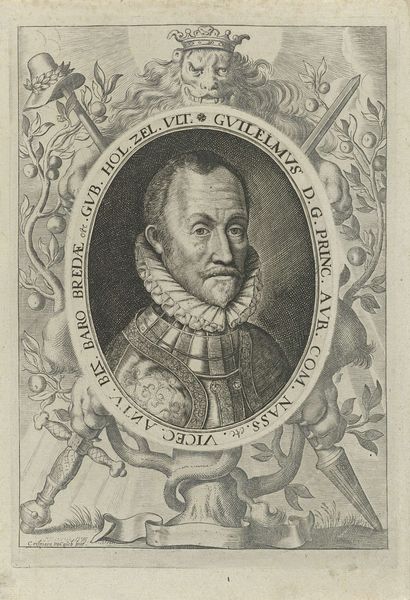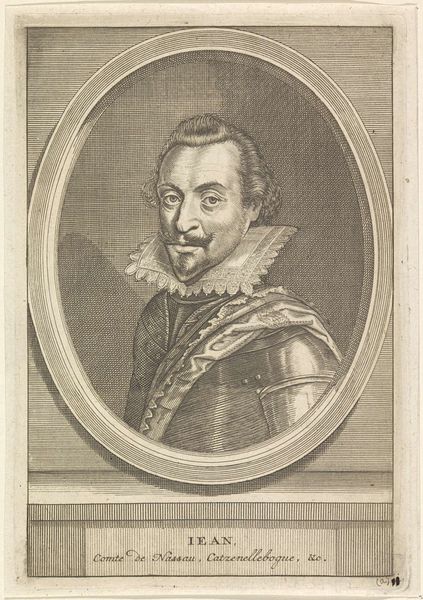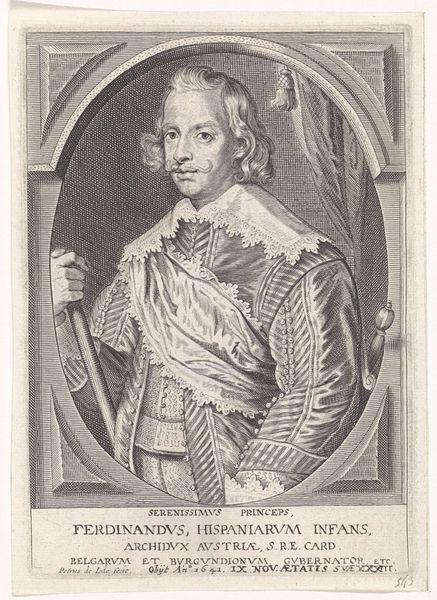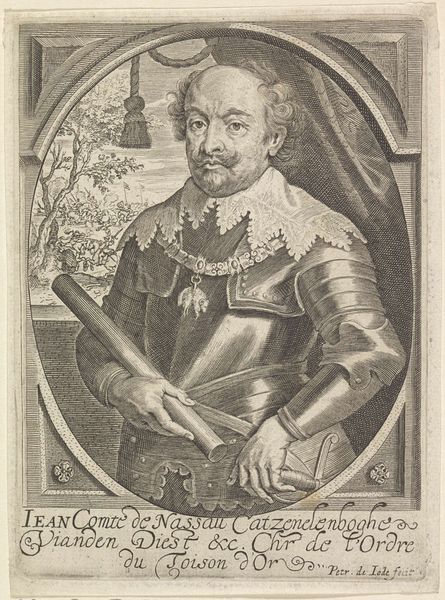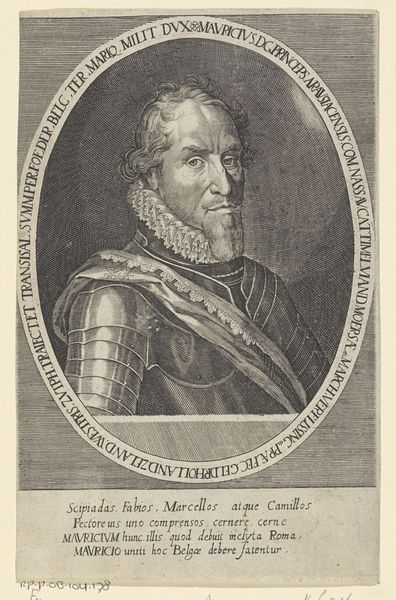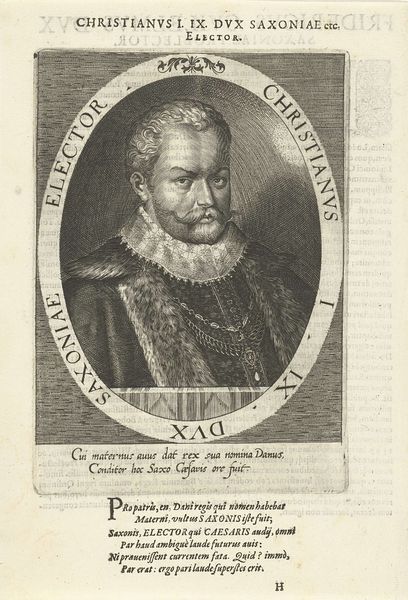
print, paper, engraving
#
portrait
#
baroque
#
dutch-golden-age
# print
#
old engraving style
#
paper
#
history-painting
#
engraving
#
monochrome
Dimensions: height 298 mm, width 181 mm
Copyright: Rijks Museum: Open Domain
Curator: Here we have a print dating back to 1697, "Portret van Willem I, prins van Oranje" created by Gerard Valck. Editor: It's a striking image. The monochromatic palette gives it a solemn, almost heroic air. There’s so much symbolism here – can you tell me more about that? Curator: Well, consider this print through the lens of its historical moment. Willem I, or William the Silent, as he's also known, was a pivotal figure in Dutch history, leading the revolt against Spanish rule. Prints like these served to solidify his image as a founding father, circulating widely and shaping public memory long after his assassination. Editor: Exactly. Notice the laurel wreath surrounding the portrait – a classical symbol of victory and honor. The coat of arms above the portrait amplifies that, rooting him in a lineage of power and authority. And even the firearm in the lower corner; violence both threatens and enforces social order and power. It feels incredibly calculated to build and reinforce an idea of the subject. Curator: And the inscription below? Further cementing the narrative, framing him as "Guillaume le Premier, Prince d'Orange". These prints weren’t just portraits, they were carefully constructed pieces of political messaging. The print itself acts as a social artifact, telling us a lot about the priorities of those who commissioned it, and how they wanted the public to perceive Willem I. Editor: The detail in the rendering is incredible – look at the intricate ruff around his neck, or the textures of his armour. They function as emblems of status. I would suggest those material elements do something more as well: soften him as an aesthetic object while reminding people he's one of them through visual cues that have an almost domestic familiarity. Curator: That speaks to the power of images. We should note that they were never neutral; they were deployed strategically in early modern Europe to influence public opinion and project power. Editor: Right, and even today, examining the symbology reveals the depth and complexity behind this carefully curated projection of identity. The more closely we examine the iconography, the more powerful the message it conveys.
Comments
No comments
Be the first to comment and join the conversation on the ultimate creative platform.
